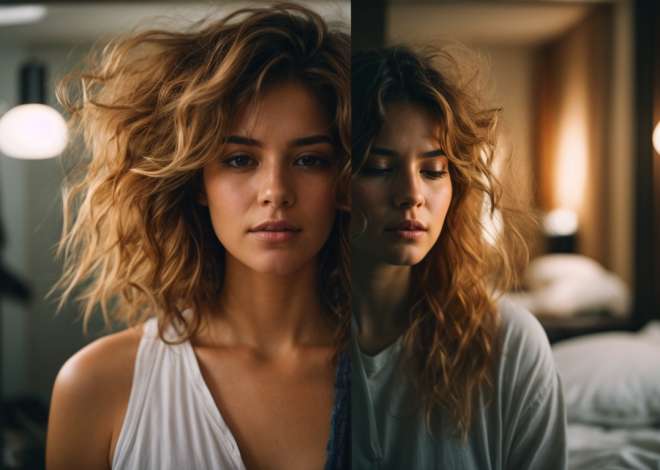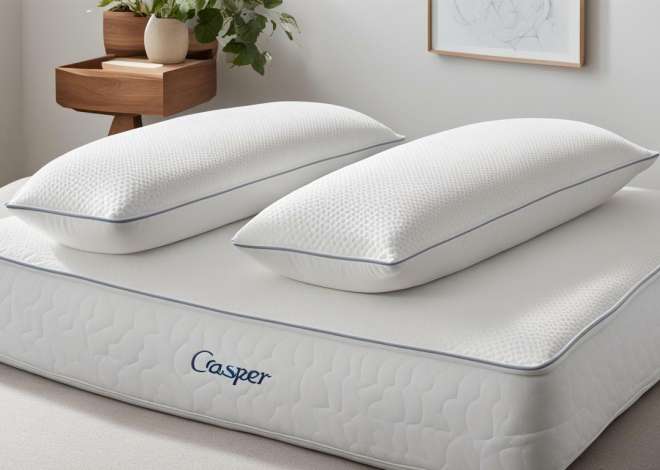
Should pillowcases be washed inside out?
For most people, pillowcases are an afterthought when it comes to laundry day. They are often thrown in with the rest of the bedding and washed without much consideration. However, many experts suggest that washing pillowcases inside out can bring a significant improvement in hygiene levels, sleep quality, and longevity of the bedding. In this article, we will explore the benefits and drawbacks of washing pillowcases inside out, different washing techniques, and the impact of washing pillowcases on allergies and skin irritations.
The benefits of washing pillowcases inside out
One of the main advantages of washing pillowcases inside out is the improved cleanliness it brings. When you wash your pillowcases the regular way, dirt, sweat, and oil can accumulate in the folds and seams of the fabric, creating an ideal breeding ground for bacteria, fungus, and other microorganisms. By washing pillowcases inside out, you expose these areas to the machine’s agitator, which helps to dislodge and remove any trapped contaminants.
Another benefit is the reduction in friction that can occur when your face rubs against the fabric during sleep. This friction can lead to hair breakage, acne, and wrinkle formation over time. By washing pillowcases inside out, you reduce the potential for friction and keep your skin and hair looking and feeling their best.
Additionally, washing pillowcases inside out can help to preserve the color and quality of the fabric. When you wash your pillowcases the regular way, the fabric can rub against other items in the machine, causing it to fade or become damaged over time. By washing pillowcases inside out, you protect the outer layer of the fabric and help to maintain its original appearance and texture.
The drawbacks of washing pillowcases inside out
While there are numerous benefits to washing pillowcases inside out, there are also a few potential drawbacks. One of the main issues is that the fabric may become damaged during the wash cycle. The agitator can create small holes or tears in the fabric, which can lead to premature wear and tear. To prevent this from happening, it is recommended to use a delicate cycle or hand wash any pillowcases that may be prone to damage.
Another drawback is the potential for the fabric to become wrinkled or misshapen. When washed inside out, the fabric is more likely to become twisted or bunch up in certain areas, leading to wrinkles or unsightly creases. This can be alleviated by using a fabric softener or dryer sheets during the wash cycle, which can help to keep the fabric smooth and supple.
Additionally, washing pillowcases inside out may not effectively remove all dirt and oils from the fabric. When the pillowcase is turned inside out, the surface area that comes into contact with the water and detergent is reduced, which can result in a less thorough cleaning. To ensure that your pillowcases are properly cleaned, it is recommended to wash them right side out and use a high-quality detergent that is designed to remove dirt and oils from fabrics.
How often should you wash your pillowcases?
How often you should wash your pillowcases depends on several factors, including your skin type, hair type, and overall hygiene levels. However, most experts recommend washing pillowcases at least once a week, with some suggesting twice a week for those with oily or acne-prone skin. It is also important to wash your pillowcases more frequently if you have recently been sick or if you sweat heavily during sleep.
Additionally, it is important to note that washing your pillowcases regularly can also help prevent the buildup of allergens and dust mites, which can cause allergies and respiratory issues. If you have allergies or asthma, it is recommended to wash your pillowcases even more frequently, such as every three to four days. By keeping your pillowcases clean, you can improve your overall sleep quality and promote better skin and respiratory health.
The best washing techniques for prolonging the life of your pillowcases
To keep your pillowcases looking and feeling their best, it is important to use the right washing techniques. First and foremost, always check the care label on the pillowcase to ensure that you are following the manufacturer’s recommended instructions. When washing, use a mild detergent and a gentle cycle to avoid damage to the fabric. It is also wise to wash your pillowcases separately from other laundry items, to prevent any colour bleeding or fabric damage.
To prevent premature wear and tear, avoid using high heat during the drying process. Instead, air-dry your pillowcases or use a low-heat setting on your dryer. Always remove your pillowcases from the dryer before they are fully dry to prevent over-drying and potential damage to the fabric.
The impact of washing pillowcases on allergies and skin irritations
For those with sensitive skin or allergies, washing pillowcases regularly can have a significant impact on overall comfort and health. By removing dirt, dust, and other allergens from the fabric, you can reduce the likelihood of skin irritation or respiratory issues. However, it is important to choose a hypoallergenic detergent and avoid using fabric softener or dryer sheets, which can contain harsh chemicals that may cause irritation.
How to properly dry and store your pillowcases after washing
Once your pillowcases have been washed and dried, it is important to store them properly to maintain their cleanliness and longevity. Fold your pillowcases neatly and place them in a cool, dry location, away from direct sunlight, moisture, or dust. Avoid storing them in plastic bags, which can trap moisture and create a breeding ground for bacteria or mildew.
The impact of different fabrics on the need to wash pillowcases inside out
The type of fabric that your pillowcases are made of can also impact the need to wash them inside out. Natural fibres, such as cotton or linen, may benefit from being washed inside out to remove any built-up dirt or oils. However, synthetic fibres, such as polyester or microfibre, may not require this extra step, as they are less prone to trapping contaminants in the fabric.
Alternatives to washing pillowcases inside out for maintaining cleanliness
Although washing pillowcases inside out is one effective way to improve cleanliness levels, there are other strategies to maintain hygiene without this extra step. One option is to use a pillow protector, which creates a barrier between your face and the pillowcase, reducing the potential for dirt, sweat, or oil to accumulate in the fabric folds. Another option is to rotate your pillowcases on a regular basis, so that each one has a chance to air out and remain fresher for longer.
Common misconceptions about washing pillowcases and the truth behind them
Finally, there are several common misconceptions about washing pillowcases that are worth addressing. One is the belief that washing in hot water is necessary to kill germs and bacteria. While hot water can help to remove certain types of contaminants, it is not always necessary and can damage certain types of fabric. Another myth is that using bleach or other harsh chemicals is necessary for achieving a deeper clean. However, these chemicals can be harmful to the fabric and to your skin, and may not be necessary for regular washing.
Overall, washing pillowcases inside out can bring significant benefits in terms of cleanliness, sleep quality, and fabric longevity. However, there are also potential drawbacks and alternative strategies to consider. By following the right washing techniques and maintaining proper hygiene levels, you can ensure that your pillowcases remain fresh, comfortable, and healthy for many nights of good sleep.


